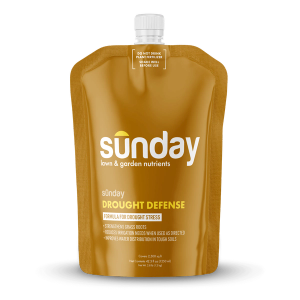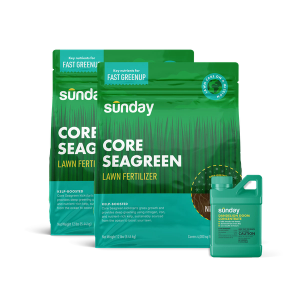Fine fescue grass is actually a group of Festuca species: hard fescue, Chewings fescue, sheep fescue, and creeping red fescues. They have fine, almost needle-like leaves. Most fine fescues are bunch-type, except the creeping red fescues, which are rhizomatous.
Is fine fescue right for my lawn?
Fine fescues are usually grown as a blend of various fine fescue species, or in mixtures with other cool-season grasses. They have poor heat tolerance and won't do well in the deep south, but are good options for growing a cool-season lawn in the east or a cool-season lawn in the west.
Fine fescues have moderate drought tolerance and usually will require some extra watering, particularly during hot, dry summer months. They have excellent shade tolerance, though, and can be mixed in with other cool-season grasses to lend a little turfgrass boost to shady parts of the lawn, but will do well in full-sun lawns as well. Fine fescue can also be used if you’re interested in a lawn you have to mow less, or a no-mow lawn.
Sunday Tip:
Wondering what the difference is between tall fescue and fine fescue? Tall fescue has broader leaves and better drought and heat tolerance, while fine fescue has more needle-like leaves and does better in shade. You can mix tall fescue and fine fescue in your lawn to get the best of both grass types!
Establishing fine fescue
Have some shady spots that need a little sprucing up? Thinking about converting to a no-mow lawn? Just wanting to overseed the lawn to add a little extra density and diversity? Once you determine your lawn goals and decide fine fescue is the right grass for you, follow these steps to establish your fine fescue lawn:
- Test your soil. This will help you understand your lawn’s nutrient needs and your soil texture.
- Time it right. Cool-season grasses like fine fescue grow best if seeded in fall. You can also seed in spring or dormant or frost seed in late fall or early winter. We recommend not seeding fine fescue in the summer, as the seed will likely struggle to germinate in the hot, dry conditions.
- Seed fine fescue. Seed this cool-season grass when day and night temps are consistently between 55–85 degrees Fahrenheit. Water to keep soil moist until it germinates in about 6-12 days.
- For maintenance or overseeding: 2 pounds / 1,000 square foot
- For heavy repair, weedy lawns, and new lawns: 5 pounds / 1,000 square feet
- Keep the soil (and seed) moist. Grass seed needs water to germinate, so make sure to keep the soil moist by watering daily until you see grass growing. Then, reduce to a normal—deep and infrequent—watering schedule.
Caring for a fine fescue lawn
Fine fescues are relatively low-maintenance.
- Water deeply and infrequently to train your lawn to use less water and grow deep grass roots.
- Mow 3 inches or higher, and grasscyle to return nutrients to the soil.
Sunday Tip:
Growing fine fescue for a no-mow lawn? Make sure to mow at least once in the fall to reduce disease issues and remove any dead foliage. You can also mow once in the spring if you don’t like the look of the fine fescue seed heads.
- Fertilize sparingly—fine fescue has low nitrogen needs (a great fit for a Sunday smart lawn plan!)
- Pull weeds by hand or spot treat weeds, when necessary.
Keep an eye out for the occasional lawn pest, particularly grubs and billbugs, which can feed on fine fescue. Lawn diseases such as snow mold, summer patch, red thread, and dollar spot can also infect fine fescue, but typically don’t severely damage the turf. Proper maintenance can help reduce the severity of pest and disease issues in fine fescue.
Cited sources
Fine fescue. Texas A&M AgriLife Extension.
Planting and maintaining a fine fescue lawn. University of Minnesota Extension.


















